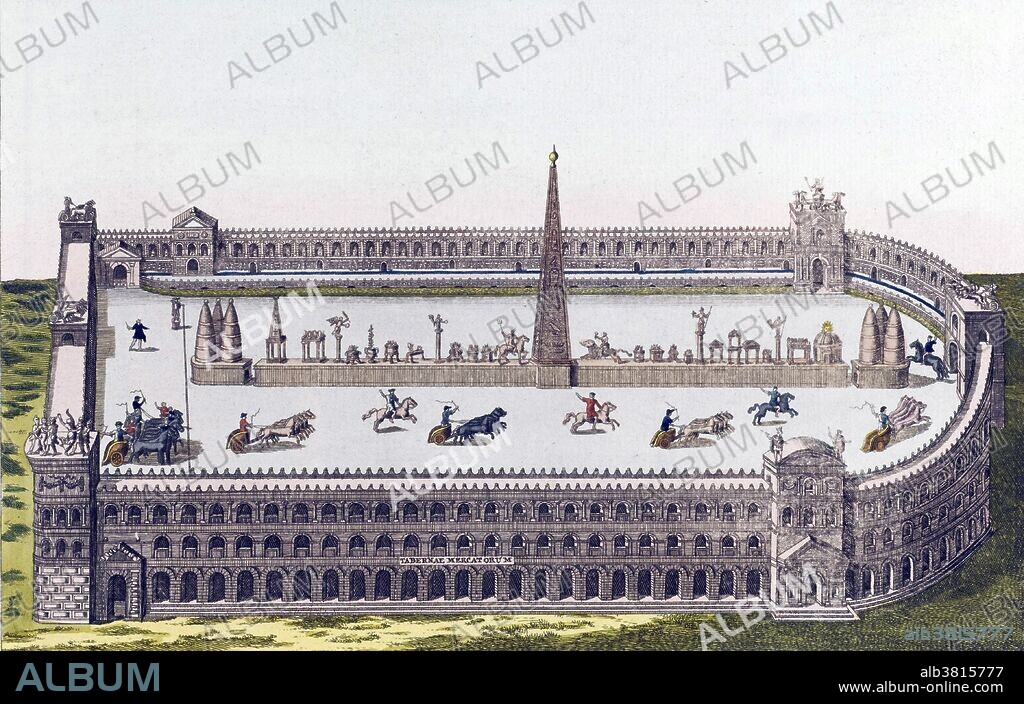alb3815777
Circus Maximus, Chariot Race

|
Zu einem anderen Lightbox hinzufügen |
|
Zu einem anderen Lightbox hinzufügen |



Haben Sie bereits ein Konto? Anmelden
Sie haben kein Konto? Registrieren
Dieses Bild kaufen

Titel:
Circus Maximus, Chariot Race
Untertitel:
Siehe automatische Übersetzung
The Circus Maximus was an ancient Roman chariot racing stadium and mass entertainment venue located in Rome, Italy. It was the first and largest stadium in ancient Rome and its later Empire, measuring 2,037 ft long and 387 ft wide, accommodating over 150,000 spectators. One end of the track was more open than the other, as this was where the chariots lined up to begin the race. A series of gates (carceres) at the angled end of the track were staggered with a median (spina) in the center of the track. When the chariots were ready, a dropped a cloth (mappa), signaled the beginning of the race. The gates would spring open, creating a perfectly fair beginning for all participants. Once the race had begun, the chariots could move in front of each other in an attempt to cause their opponents to crash into the spinae. On the top of the spinae stood small tables or frames supported on pillars, and also small pieces of marble in the shape of eggs or dolphins. The spina eventually became very elaborate, with statues and obelisks and other forms of art, becoming so numerous that they obstructed the view of spectators on lower seats. At either end of the spina was a meta (turning point), in the form of large gilded columns.
Bildnachweis:
Album / Science Source / Wellcome Images
Freigaben (Releases):
Model: Nein - Eigentum: Nein
Rechtefragen?
Rechtefragen?
Bildgröße:
4650 x 2957 px | 39.3 MB
Druckgröße:
39.4 x 25.0 cm | 15.5 x 9.9 in (300 dpi)
Schlüsselwörter:
ARCHITEKTUR: STADION • ARENA • BERÜHMT • BERÜHMTE PERSÖNLICHKEIT • ILLUSTRATION • ILLUSTRATIONS • ITALIEN • NOTABEL • PFERDERENNEN • PROMINENZ • ROM • SPECTATOR-AUDIENCE • SPORT • SPORT: PFERDERENNEN • SPORT: WAGENRENNEN • STADION • UNTERHALTUNG (ENTERTAINMENT) • UNTERHALTUNG • WAGENRENNEN • ZEITVERTREIB
 Pinterest
Pinterest Twitter
Twitter Facebook
Facebook Link kopieren
Link kopieren Email
Email
